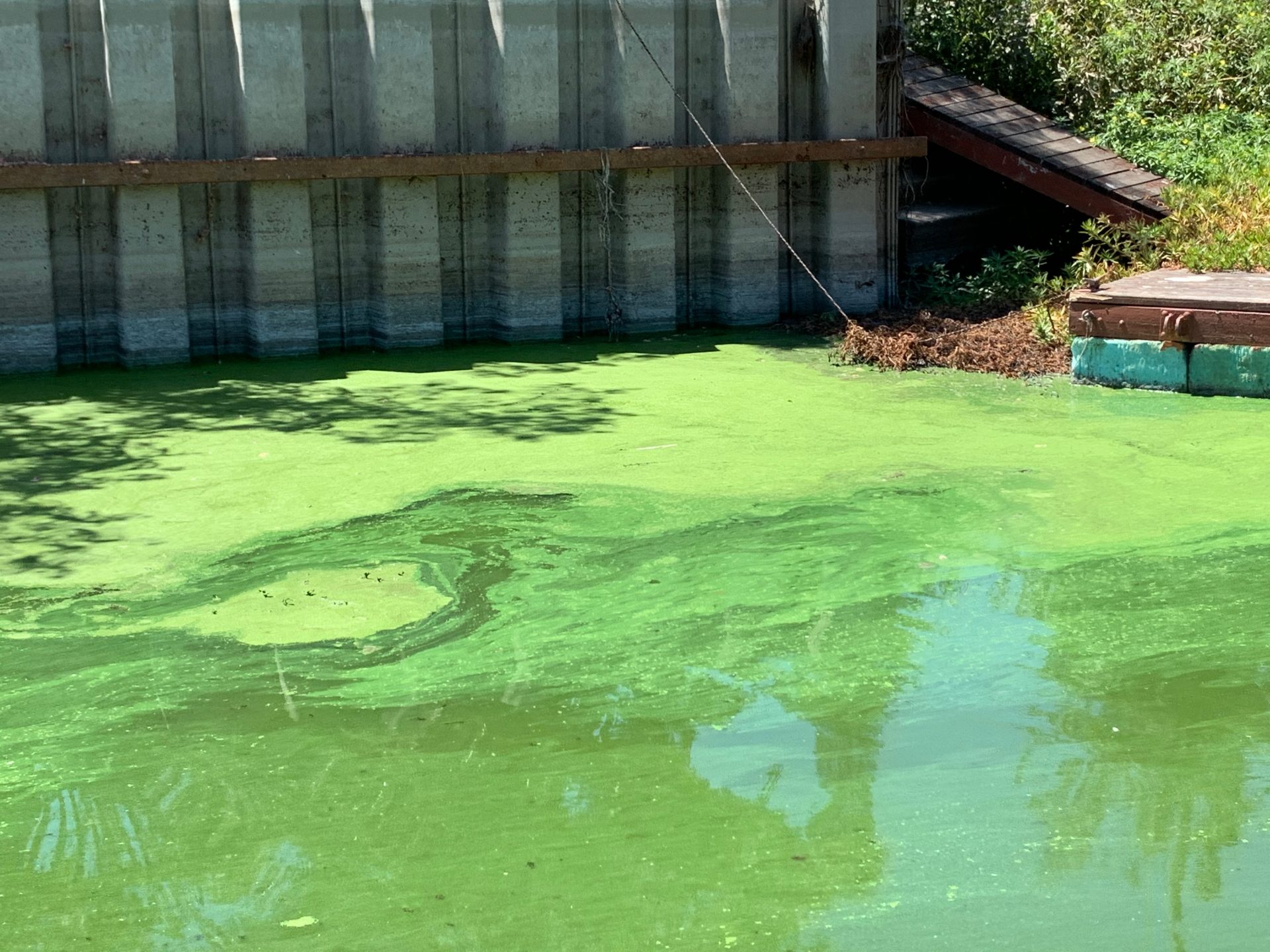
What Are Algal and Cyanobacterial (‘blue-green algal’) Blooms?
Simply put, algal ‘blooms’ are large accumulations of microscopic algae, a result of uncontrolled growth of a particular species, or mixture of species. Blooms often (but not always) manifest as discolorations of the water that can impart green, red, brown or other hues to the water, and have often been referred to historically as ‘red tides’. Blooms formed by noxious or toxic species (Harmful Algal Blooms [HABs]) may present a variety of different and sometimes co-occurring health risks. Different species of algae (including cyanobacteria, formerly called ‘blue-green algae’) can produce different classes of noxious or toxic compounds, and some individual species are capable of producing more than one type of toxin. These substances are generally produced as by-products during their growth, and their purpose(s) is unknown for most of these compounds. Toxins can occur throughout the water column or accumulate at the sediment surface during a bloom. The effects of these by-products may range from mild nuisances to extremely toxic situations.
There are both marine and freshwater algal species that produce toxic compounds. For the most part, toxin producers in marine waters are ‘true’ algal species, while the dominant toxin producers in freshwater ecosystems are cyanobacteria (although still often referred to as ‘blue-green algae’ outside the scientific community).
There are a number of informative reviews on the causes of freshwater and marine harmful algal blooms. A few that are readily available and understandable to the lay public are listed here, although there are many informative reviews on the topic in the scientific literature.
- An overview of marine harmful algal blooms, their health implications and future outlook
- A World Health Organization publication on harmful blooms provides some background and guidance on harmful blooms in coastal and fresh waters (Guidelines for safe recreational water environments. Volume 1, Coastal and fresh waters; Chapter 8)
- Another publication providing some basic and straightforward information on the types, and general causes of cyanobacterial (‘blue-green algal’) blooms in fresh water.
- A primer for understanding cyanobacterial (‘blue-green algal’) blooms, their causes, toxins, mitigation and management has been produced by the Regional Water Quality Control Board Central Valley Region.
The distribution and ecology of several important marine algal toxins and the species that produce them has been well-studied for decades, and there are numerous reviews and summaries that provide information on the topic
We have also long been aware of toxic cyanobacteria that occur in freshwater ecosystems, but knowledge of the geographic distribution and magnitude of these events is more recent. An important turning point in the United States with respect to our recognition of the danger posed by freshwater toxins occurred in Toledo, Ohio in 2014 when nearly half a million people lost access to their tap water supply due to high amounts of an algal toxin, microcystin.
Algal blooms are a natural phenomenon, but factors at play today have increased the frequency, duration, and severity of algal blooms. In particular, cyanobacteria grow well at elevated water temperature, in nutrient rich environments, and under stagnant water conditions relative to other algae. They have therefore become more prominent in recent years due to natural and anthropogenically enhanced eutrophication (excessive inputs of nutrients) of our water bodies and waterways, and by environmental conditions promulgated by climate change.
Cyanobacteria can produce a wide variety of toxic compounds, with many variations in chemical composition and level of toxicity. These substances are often called ‘cyanotoxins’. The most well-known cyanotoxins include a class of compounds called microcystins (which are toxic to liver and cause cancer formation), anatoxin-a (also known as ‘very fast death factor’; a lethal neurotoxin), cylindrospermopsin (which affects the liver and kidney), and saxitoxins (a class of potent neurotoxins also produced by certain marine algae).
